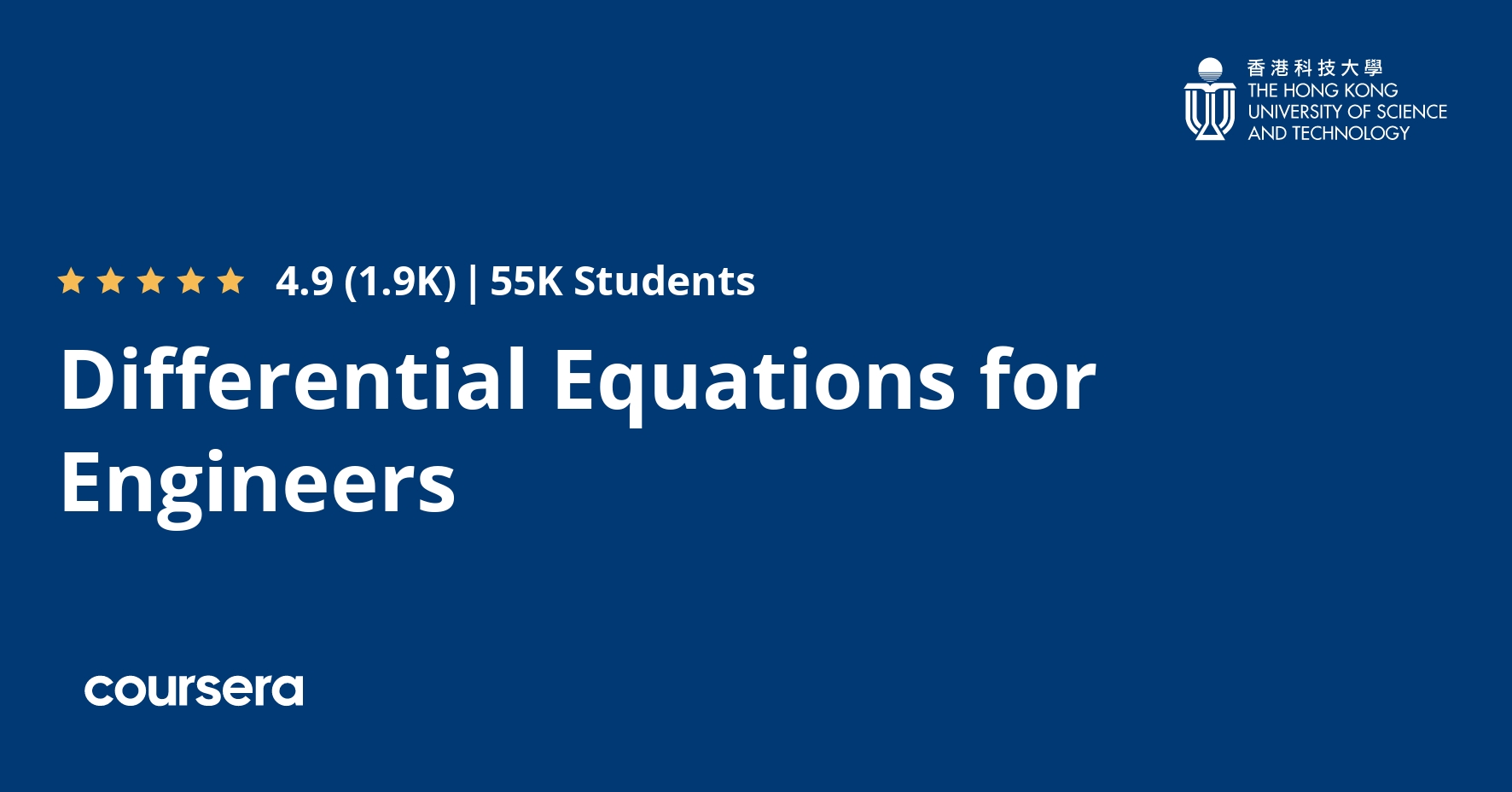Description
This course is all about differential equations. Both basic theory and applications are taught. In the first five weeks we will learn about ordinary differential equations, and in the final week, partial differential equations.
The course contains 56 short lecture videos, with a few problems to solve after each lecture. And after each substantial topic, there is a short practice quiz. Solutions to the problems and practice quizzes can be found in instructor-provided lecture notes. There are a total of six weeks in the course, and at the end of each week there is an assessed quiz.
Download the lecture notes:
http://www.math.ust.hk/~machas/differential-equations-for-engineers.pdf
Watch the promotional video:
https://youtu.be/eSty7oo09ZI
What you will learn
First-Order Differential Equations
A differential equation is an equation for a function with one or more of its derivatives. We introduce differential equations and classify them. We then learn about the Euler method for numerically solving a first-order ordinary differential equation (ode). Then we learn analytical methods for solving separable and linear first-order odes. An explanation of the theory is followed by illustrative solutions of some simple odes. Finally, we learn about three real-world examples of first-order odes: compound interest, terminal velocity of a falling mass, and the resistor-capacitor electrical circuit.
Homogeneous Linear Differential Equations
We generalize the Euler numerical method to a second-order ode. We then develop two theoretical concepts used for linear equations: the principle of superposition, and the Wronskian. Armed with these concepts, we can find analytical solutions to a homogeneous second-order ode with constant coefficients. We make use of an exponential ansatz, and transform the constant-coefficient ode to a quadratic equation called the characteristic equation of the ode. The characteristic equation may have real or complex roots and we learn solution methods for the different cases.
Inhomogeneous Linear Differential Equations
We now add an inhomogeneous term to the constant-coefficient ode. The inhomogeneous term may be an exponential, a sine or cosine, or a polynomial. We also study the phenomena of resonance, when the forcing frequency is equal to the natural frequency of the oscillator. Finally, we learn about three important applications: the RLC electrical circuit, a mass on a spring, and the pendulum.
The Laplace Transform and Series Solution Methods
We present two new analytical solution methods for solving linear odes. The first is the Laplace transform method, which is used to solve the constant-coefficient ode with a discontinuous or impulsive inhomogeneous term. The Laplace transform is a good vehicle in general for introducing sophisticated integral transform techniques within an easily understandable context. We also discuss the series solution of a linear ode. Although we do not go deeply here, an introduction to this technique may be useful to students that encounter it again in more advanced courses.





